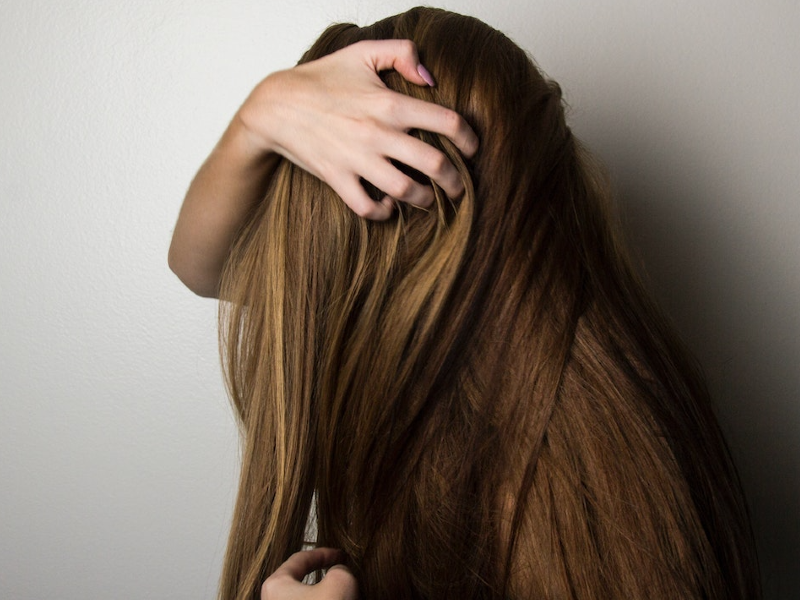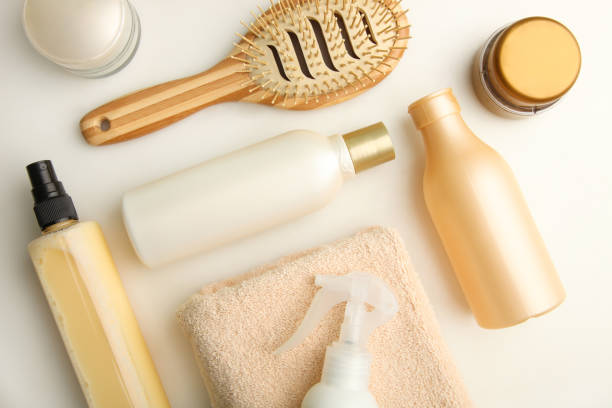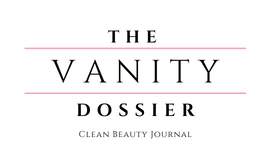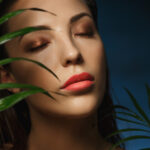
When you have healthy scalp, you get healthy hair. So you need to know all about your scalp to give it the right care it needs. Treat your scalp right and it will give you great hair right back.
You probably never give your scalp a thought when worrying about the condition of your hair? But, if your goal is a head full of luxuriant locks, then you need to take care of your scalp’s needs – after all that’s where all the roots are. If your scalp is healthy, then your roots are healthy, and then your hair is healthy…you get the gist.
So, let’s get the fact clear. Your scalp can be of different types just like your skin. And, why not? The scalp is an extension f your skin, so like skin it can be dry, oily, flaky and sensitive. You need to listen to your scalp, find out its type and care for it the right way and you will be blessed with beautiful hair.
The first step to healthy scalp is “Proper intake of vitamin, minerals and protein rich foods, regular oil massage to get the circulation going and stimulate the roots. A good night’s sleep and keeping stress to a minimum is a good mantra for scalp and hair that is beautiful and well nourished. Most important of all is using the right shampoo that suits your scalp type and has the goodness to take care of your hair conditions,” says Dr Punit Saraogi, Clinical & Cosmetic Dermatologist & Trichologist based in Mumbai.
KNOW YOUR SCALP
First things firt, before you decide to care for your scalp the right right, you’ve got to find out the type you have. Just like skin, scalp can be dry, oily, or sensitive or sensitized. You need to examine your hair more closely to determine your scalp type. To really know your scalp and hair texture, try this, as advised by Dr Rashmi Shetty, cosmetic dermatologist and hair expert, Ra’s Clinic, Mumbai: Shampoo at night and do not condition your hair. Observe your scalp and hair the next day and the day after. If you have oily scalp and hair, then both will feel greasy by the end of the first day. If you have normal or balanced scalp and hair, then it will just look shiny, and if you have dry hair then scalp will remain dry, and hair might start looking dull and even feel rough by the second day.
WHEN YOUR SCALP IS NORMAL OR BALANCED
Well, you are lucky out there, aren’t you? Just like normal skin requires easy, straightforward care, so does balanced scalp. Balanced scalp means, the oil glands on the scalp are producing just the right amount of sebum, so that your roots are neither greasy nor dry. Hair looks lush and shiny.
How to keep scalp balanced: Use formulas designed for your hair type to wash the hair every three to four days to take care of it. Avoiding excessive hair care products and eating a balanced diet is the easiest way to keep your balanced scalp clean and healthy. Along with that, using products that are organic and free of nasties are of the utmost priority if you love your hair and wish to keep them growing and glowing.

WHEN YOU HAVE DRY SCALP TYPE
A dry scalp is marked by the sign that it feels dry and stretched after shampooing. It can get itchy and flakes appear easily. There is very little sebum at the roots and hair looks dull. Dry scalp is highly prone to irriation, redness, itchiness, tightness, and even burning sensations. Eczema or seborrheic dermatitis is also a very common dry scalp problem that needs special care.
How to care for dry scalp: To care for a dry scalp, massaging it with warm and not hot oil works the best. It helps to condition the scalp and stimulate the roots. With improved blood circulation, you can fight the tight, stretched feeling that a dry scalp can give you. Look for rich hair oils with roots strengthening and nourishing ingredients like bhringraj, hibiscus, curry leaves, sesame oil, argan oil etc.
Use a mild, gentle shampoo to wash your hair twice a week. Pick one without additives like sulphates, parabens or silicone. These can make dry scalp drier. Clean hair care products are best suited for this scalp condition.
If you are plagued by dandruff or flakey scalp the use a shampoo with ingredients like zinc, salicylic zcid, or magnesium, once a week in addition to your rgular shampoo to combat the condition. Using a scalp mask with enriching and hydrating ingredients like shea butter, coconut oil or oilive oil, egg, yoghurt can also go a long way in treating the dryness on your scalp.
WHEN YOU HAVE OILY SCALP TYPE
The overproduction of sebum by the oil glands results in an oily scalp. The hair becomes oily right away after washing it. The buildup of dead skin cells, scalp acne,blocked roots and dandruff are all indicators of an oily scalp. Oily scalp can make your hair look shiny but that can turn greasy within a day. Oily scalp can also tend to get smelly when left unwashed for long.
Contrary to popular belief, greasy dandruff results from an excess of oil on the scalp, which causes skin cells to accumulate and shed. By size and feel, you can distinguish between flakes from dryness and flakes from dandruff. Dandruff flakes are bigger and feel oilier, whereas dry flakes might feel scratchy and look smaller.
How to care for oily scalp: Instead of using heavy hair oils to nourish your scalp, try a lighweight hair vitalizer to massage and stimulate your scalp. Blend few drops of tea tree oil or peppermint oil with plain water or a light carrier oil like apricot oil and use that to massage and moisturize your scalp. This also helps to fight dandruff and bad odour from the scalp. Before washing your hair, use a thick wooden comb or a rubber hair brush to comb hair and loosen any dirt and flakes that tend to stick to greasy scalp.
Try washing your hair every other day or every two days to balance excess sebum on your scalp and stop oil from clogging the hair follicles. The secret to keeping your oily scalp balanced is to avoid using any leave-in conditioners or thick formulas that might weigh the hair down and contribute to a greasy, oily scalp. They can also make your hair look limp. Choose lightweight conditioners customized for your scalp type instead. If you have dandruff, use a shampoo with Zinc as the main ingredient.
WHEN YOU HAVE SENSITIZED SCALP
Sensitive or senstized scalp is caused due excessive use of chemical treatments like colouring, rebonding, perming. You will find it either ultra-dry or greasy or prone to folliculitis. Meanwhile you hair gets either oily or dry. Exposure to pollution, sun, and even harsh air conditioning can play havoc with your scalp, just like they do to your skin.
How to care for sensitive scalp: Many cannot recognise this problem and use wrong hair care products. The first step to treating scalp issues is to use a clarifying shampoo at least once a week. Look for shampoo with tea tree oil, peppermint and lavender calm and refresh your scalp. To give your strands a break, avoid styling products for a few days every month, instead just protect it with a light leave-in conditioner or an anti-frizz serum.
WHEN YOU HAVE COMBINATION SCALP & HAIR
Ageing process and regular use of styling products can change your hair and scalp texture. As you near your 40’s you will see the quality of your hair becoming thin or scalp becoming oilier. Regular use of styling products can have a drying effect.
Dr Shetty explains that due to hormonal reasons and chemicals in the products used many women have scalp and hair conditions that are dissimilar – so you can have dry scalp and greasy hair strands or greasy scalp and dry strands. But not knowing this actually means that many of us fail in taking care of the scalp and hair in the right manner, which eventually leads to serous ‘bad hair’ days. “If you have a situation where you have combination of dry and greasy then you have to choose products accordingly. So for greasy scalp you will need a shampoo to remove excess oil, and to treat dry hair you will need a softening and smoothing conditioner and treat, and vice a versa,” adds Dr Shetty.











